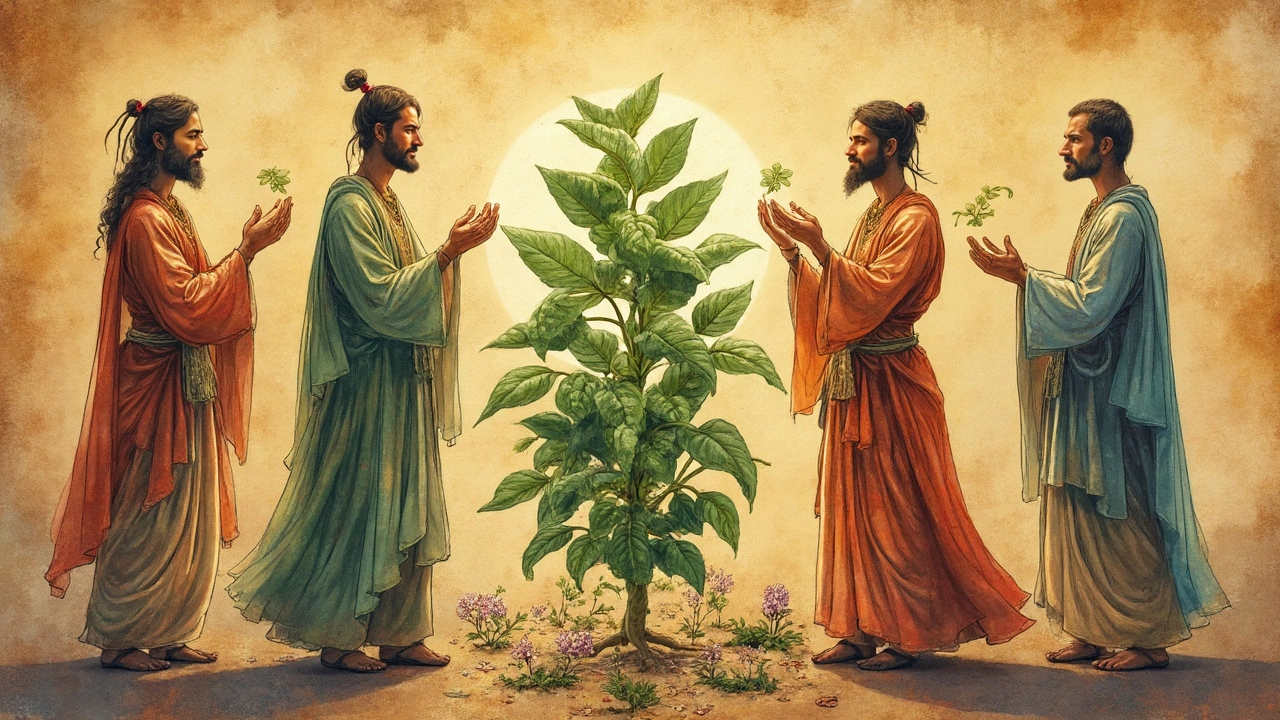-
30

The Miracle Herb: Discovering the Plant That Heals Everything
The idea of a single plant that can cure just about anything isn’t some new-age fantasy. People have hunted for this miracle for centuries. Sometimes, the hype is wild—stories of lost Amazonian roots or mysterious Himalayan leaves. Yet, one plant keeps popping up across continents and cultures. Herbalists call it Ocimum sanctum. Most people know it as holy basil or tulsi. Folks in India treat this plant with almost superstitious reverence. But could any living thing—let alone a humble herb—honestly wear the crown of the plant that heals everything?
Where Legends and Science Meet: The Rise of Holy Basil
Walk through a street in Delhi, and odds are, you’ll spot a tulsi plant in someone’s courtyard. It isn’t just for decoration. For thousands of years, Indian families have used holy basil as a catch-all home remedy. It’s in everything from teas for coughs to soothing pastes for wounds. Ancient texts like the Charaka Samhita praise tulsi for ‘protecting life in all seasons and all ailments.’ But how much of that stands up under scientific scrutiny?
Researchers started digging into tulsi when they saw how people used it every day. Several clinical studies published in journals like Journal of Ethnopharmacology show tulsi’s extracts have antibacterial, antiviral, and antifungal activity. In fact, a recent study from 2023 compared holy basil oil with standard antibiotics on E. coli and staph bacteria and found surprisingly robust results—not just folklore, but real, measurable impact.
Polyphenols and flavonoids inside tulsi help mop up free radicals—a fancy way of saying they act as powerful antioxidants. A 2022 survey of Indian households showed that those with regular tulsi use had 25% fewer reported cases of colds and mild flu. It’s almost like having a tiny green bodyguard right in your garden.
Tulsi and the Toolkit of Herbal Healing
Holy basil stands tall, but it’s not the only show in the healing garden. From aloe vera slathered on burns to chamomile sipped for insomnia, people reach for plants for almost every minor health crisis. Yet, tulsi keeps coming up in scientific literature, earning nicknames like ‘The Queen of Herbs’ or ‘The Elixir of Life.’
The main difference? Holy basil doesn’t just focus on one thing. It packs a punch in multiple areas—think immune boosting, fighting stress, controlling blood sugar, helping digestion, and even acting as a mild pain reliever. Scientists believe these benefits come from a set of compounds called eugenol, ursolic acid, and rosmarinic acid, which are present in higher amounts than in most other healing herbs.
Ever heard your grandma insist you chew a few tulsi leaves every morning? There’s a reason—it’s part tradition, part immune insurance. Ashram monks famously drink tulsi-infused water for its calming effect. In Myanmar, people crush the leaves to treat skin infections. Even Western herbalists mention holy basil in protocols for balancing cortisol, the ‘stress hormone.’ It’s basically the Swiss Army knife of herbs.

How to Use Holy Basil: Practical Tips and Wild Ideas
Sure, you could just buy a jar of tulsi tea, but there’s a universe of ways to use holy basil. Growing a small plant at home? Pluck three to five fresh leaves and chew them raw on an empty stomach. That classic tip comes backed by a randomized test in Pune, where students who ate three tulsi leaves daily reported milder allergy symptoms and less school sick-leave over six months. Look past teas—the essential oil works as a fantastic mosquito repellent. Try crushing fresh leaves into coconut oil for a soothing pain relief balm. Got a nasty cough? Steep the leaves with ginger and honey, and you’ll swear you found a secret remedy.
Here’s an easy recipe:
- Take 10-12 tulsi leaves and wash them.
- Boil with two cups of water and two crushed cloves.
- Add a bit of grated ginger and a spoon of honey.
If you prefer powdered supplements, go for brands that list Ocimum sanctum and test for purity. Unlike many herbs, tulsi grows well in pots—even on cramped balconies or windowsills—just keep the soil moist and let it get plenty of sunlight.
Is There Really a Plant that Heals Everything? Exploring the Myth
Here’s the thing—no single plant can cure every problem. But holy basil comes close to ticking a wild list of boxes. Why does tulsi earn this near-mythical tag? It’s partly science, partly hope, and a lot of positive experiences shared by millions.
Let’s get concrete and look at what the numbers and studies say. In a comparison of popular ‘healing’ herbs, researchers stacked up the common benefits:
| Herb | Anti-inflammatory | Antioxidant | Immunity Boost | Stress Relief |
|---|---|---|---|---|
| Holy Basil (tulsi) | Yes | Yes | Yes | Yes |
| Aloe Vera | Yes | Yes | Some | No |
| Chamomile | Some | Yes | No | Yes |
| Neem | Yes | Yes | Yes | No |
So, if you’re searching for a single plant with broad effects, tulsi actually outperforms most popular options.
The so-called ‘plant that heals everything’ idea isn’t about magic. It’s about using a tool that adapts to whatever life throws at you. The active compounds in tulsi show measurable improvements in everything from seasonal sniffles to chronic stress. Will it fix a broken bone? No. But can it edge out minor ailments while boosting your daily energy? Absolutely.

The Global Journey of Tulsi: Why It’s Crossing Borders
Holy basil didn’t stay hidden in the gardens of Hindu temples. In the last decade, Western herbal markets have jumped on the bandwagon. Walk into a health food store in London, and you’ll find tulsi capsules. Trendy cafés in Melbourne serve tulsi-lime iced teas. The world is catching on to what Indian homes have known for centuries.
Modern studies even point to holy basil’s potential in lifestyle diseases. In a 2024 multi-country trial, prediabetic adults taking tulsi extract twice daily showed lower fasting glucose after twelve weeks. Mental health researchers are exploring how tulsi supplements reduce subjective anxiety in test subjects. One journal, Evidence-Based Complementary and Alternative Medicine, hailed tulsi as a ‘promising adaptogen for urban living.’
People use the plant for everything from hair oil to mouthwash, foot soaks to anti-acne creams. That’s range. The versatility and hardiness of this plant easily make it a candidate for any ‘survival garden.’ And the funny part? For all the high-tech health trends, this little plant keeps delivering with no fancy packaging or overhyped marketing.
Endlessly hyped or genuinely helpful? Holy basil stands up to both ancient legends and modern science. Will it heal literally everything? No. But compared to most alternatives, this ‘miracle plant’ lives up to its name far more than most remedies gathering dust on pharmacy shelves.